
Bible Study Helps: Hosea
Here are some tools to help you understand and enjoy the book of Hosea:
The first of the twelve “minor prophets” is Hosea, one of the earliest (the twelve were active from the eighth to the fifth century B.C.) And his book is one of the longest ones (14 chapters). His focus is on the northern kingdom of Israel, whereas most of the other minor prophets focus on the southern kingdom of Judah.
The prophets in general have been called God’s covenant enforcers. They held Israel to account to the covenant they had made with Yahweh. The stipulations of the covenant are found in places like Deuteronomy 27-28. There we read about blessings for obedience and curses for disobedience.
Hosea is calling Israel to repentance for its disobedience, idolatry and sin. He often uses the metaphor and imagery of a marriage relationship as he chastises Israel and urges them to return to their first love. As with most prophets, there are words of judgement and punishment to come, but there are also words of hope and restoration – if the people repent.
Two issues of the book can be discussed in a bit more detail. The first concerns the matter of Hosea being commanded to marry a “wife of whoredom”. A number of questions arise here. First of all, was this woman (Gomer) a prostitute or an adulteress woman before or during his marriage to her?
And we have two accounts of this as found in Hosea 1 and 3. Are these two different women, or parallel accounts of the same woman? Did he marry her, divorce her, then remarry her? Or if it is the same woman, did she leave Hosea, then come back and he received her?
There have been various ways to answer these questions and resolve these issues. And while we can speculate on the fine details, we must not overlook the main point of all this: God is giving his people a real life parable of how he views unfaithful Israel. He hates the sin that is causing the break in the relationship, yet he continues to love and yearn for her, despite her spiritual adultery. As Duane Garrett says:
The reason for God’s astonishing command to Hosea is that “the land is guilty of the vilest adultery in departing from the LORD.” In other words, God specifically tells Hosea to enter into the same kind of marriage that Yahweh himself is in. Hosea is to experience the sorrows of God and thus speak in God’s place to the nation. The Hebrew also implies that Israel’s acts of adultery against God have taken the people progressively further away from him. Every act of apostasy and immorality has driven a wedge deeply between them and their God.
Or as Derek Kidner remarked:
It is the people you love who can hurt you most. One can almost trace the degree of potential pain along a scale—from the rebuff you hardly notice from a stranger, to the rather upsetting clash you may have with a friend, right on to the stinging hurt of a jilting, the ache of a parent-child estrangement, or, most wounding of all, the betrayal of a marriage.
Nothing short of the last two of these could really have conveyed to Hosea or to us how deeply God cares about us. Even then, words alone might have failed to bring home the sharpness of it. It needed acting out, and in real life at that.
While enacted parables and prophecies are sometimes found with the other prophets, such as Isaiah, Ezekiel and Jeremiah, it is more pronounced here. As John Goldingay puts it:
Every prophecy comes through a prophet. But God’s message comes through Hosea in a special sense. In his case it is through his life that God’s message comes to people. The message can be embodied in a person through whom God speaks. But in speaking “through” Hosea, God makes outrageous demands on him. . . . God commissions Hosea to undertake a series of prophetic actions (marrying and naming) that embody central themes of his message.
The second feature of the book of Hosea worth spending further time on is the wonderful depiction of God’s love as found in Hosea 11, especially verses 1-4 and 8-9:
When Israel was a child, I loved him,
and out of Egypt I called my son.
The more they were called,
the more they went away;
they kept sacrificing to the Baals
and burning offerings to idols.
Yet it was I who taught Ephraim to walk;
I took them up by their arms,
but they did not know that I healed them.
I led them with cords of kindness,
with the bands of love,
and I became to them as one who eases the yoke on their jaws,
and I bent down to them and fed them….
How can I give you up, O Ephraim?
How can I hand you over, O Israel?
How can I make you like Admah?
How can I treat you like Zeboiim?
My heart recoils within me;
my compassion grows warm and tender.
I will not execute my burning anger;
I will not again destroy Ephraim;
for I am God and not a man,
the Holy One in your midst,
and I will not come in wrath.
While a just and holy God has every right to judge a rebellious and unfaithful Israel, and break off the ‘marital’ relationship with her, God instead reveals his deep, deep heart of love and concern for Israel. A brief remark by Mays is worth mentioning: “Anthropomorphism is Hosea’s stock-in-trade, but the portrayal of Yahweh as a father caring for a son achieves as explicit tenderness and detail unmatched in the Old Testament.”
Or as Jerry Hwang comments:
What hope remains for a nation that is rotting upward from its roots? Hosea 11:1-11 offers a sublime answer to this question by retracing the events of salvation history. This exceptional divine monologue combines recital of events in salvation history with word pictures from the spheres of family (e.g., parent, child) and animals (e.g., shepherd/heifer and lion) to offer a remarkable portrayal of the covenant between God and his people….
The picture of YHWH as judge reappears briefly. . . . Like an angry parent whose tenderness comes flooding back after discipline has achieved the desired effect, the God of Israel declares that his desire for his children was never to destroy but to restore them.
Strictly speaking, these metaphors and similes in Hos. 11 are mutually incompatible, but together in poetry they express the inscrutable nature of YHWH. Rather than portraying fickleness or indecisiveness, this kaleidoscope of images confronts the audience with a picture of YHWH who simultaneously possesses love to reconcile, holiness to judge, and power to save.
But I have written about this before, so let me quote from an earlier article on this:
If the book of Hosea is the pinnacle of Old Testament thinking on God’s suffering love, then chapter 11 is the book’s pinnacle. Consider but one verse: “How can I give you up, Ephraim? How can I hand you over, Israel? How can I treat you like Admah? How can I make you like Zeboiim? My heart is changed within me; all my compassion is aroused” (11:8). The pain Hosea experiences is only a mere shadow of the divine heartache. David Hubbard offers this helpful summary:
“The depth of what God feels, as Hosea understands those feelings, can never be separated from the height of who he is. The sharpness of the pain that registers in the divine complaints is directly related to the majesty of the Person who is suffering. . . . Not until Jesus weeps over Jerusalem, endures the betrayal of a disciple, and complains against the withdrawal of the Father, do we see a clearer picture of wounded Majesty.”
Peter Lewis makes a similar observation: “In Hosea’s prophecy and in Hosea’s pain we are going to discover the secret heart of God; his innermost feelings, his profound sorrow and his sovereign grace. Not until the Word becomes flesh will God appear so tender and so vulnerable as in the book of Hosea.”
And Peter Craigie nicely summarises the connection between love and suffering as found in Hosea: “When we say ‘God is love’, we must not say it too glibly, for that fundamental statement carries with it a necessary counterpart: ‘God is suffering’. The love and the suffering are inextricably interrelated: God suffers because he loves and because those whom he loves do not return his love.” https://billmuehlenberg.com/2017/04/21/our-wounded-god/


Critical commentaries on Hosea
Achtemeier, Elizabeth, Minor Prophets 1 (NIBC)
Andersen, Francis and David Noel Freeman, Hosea (AB)
Craigie, Peter, The Twelve Prophets, vol. 1 (DSB)
Dearman, J. Andrew, The Book of Hosea (NIC)
Garland, David, Hosea (Zondervan, 1975)
Garrett, Duane, Hosea, Joel (NAC)
Goldingay, John, Hosea – Micah (BCOTPB)
Hubbard, David, Hosea (TOTC)
Hwang, Jerry, Hosea (ZECOT)
Kidner, Derek, The Message of Hosea (BST)
McComiskey, Thomas, Hosea, in The Minor Prophets, vol. 1 (Baker, 1992)
Mackay, John, Hosea (MC)
Mays, James Luther, Hosea (OTL)
Moon, Joshua, Hosea (AOTC)
Routledge, Robin, Hosea (TOTC)
Smith, Gary, Hosea, Amos, Micah (NIVAC)
Stuart, Douglas, Hosea – Jonah (WBC)
Wood, Leon, Hosea (EBC)
Expository and devotional commentaries
Barrett, Michael, Love Divine and Unfailing (P&R, 2008)
Boice, James Montgomery, The Minor Prophets, vol. 1 (Zondervan, 1983)
Chester, Tim, Hosea: The Passion of God (Christian Focus, 2014)
Phillips, Richard, Hosea (REC)
As to my recommendations, perhaps run with Dearman, Hwang, Stuart, and Routledge. My review of Dearman’s commentary is found here: https://billmuehlenberg.com/2010/09/20/a-review-of-the-book-of-hosea-by-andrew-derman/
[1584 words]
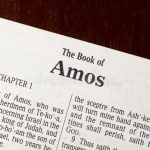
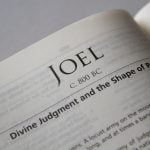






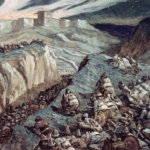
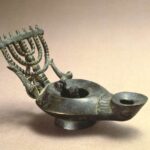

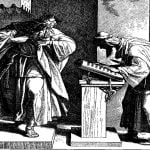

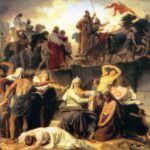



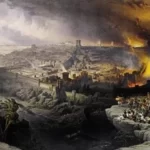

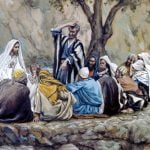
Hi Bill,
This article is incredibly helpful. I really appreciate the bibliography you have put together which will help when preparing a study, sermon or essay. I love that you have mentioned many Christo-centric themes in Hosea that we see beautifully fulfilled in Christ like his love in suffering for an unfaithful people. As well as reminding reminding us that Christ suffers for a people who cannot earn his love but receive it unconditionally. I really appreciate that your article has clear Christo-centric and Theo-centric application and not just exemplary application.
Many thanks and God Bless,
Duan
Many thanks indeed Duan. Well, you are the first to comment on this article – I was beginning to despair there for a while! Bess you.
Thanks Bill! I would also like to humbly recommend the expositional commentary on Hosea by the distinguished puritan Jeremiah Burroughs. At 700 pages of double-column text, it is packed with excellent material but can be a little tough to read at times.
Thanks for that Brett. I have featured only more recent commentaries here, but there would be many from the older Reformed and Puritan writers as well that could be included in this list.